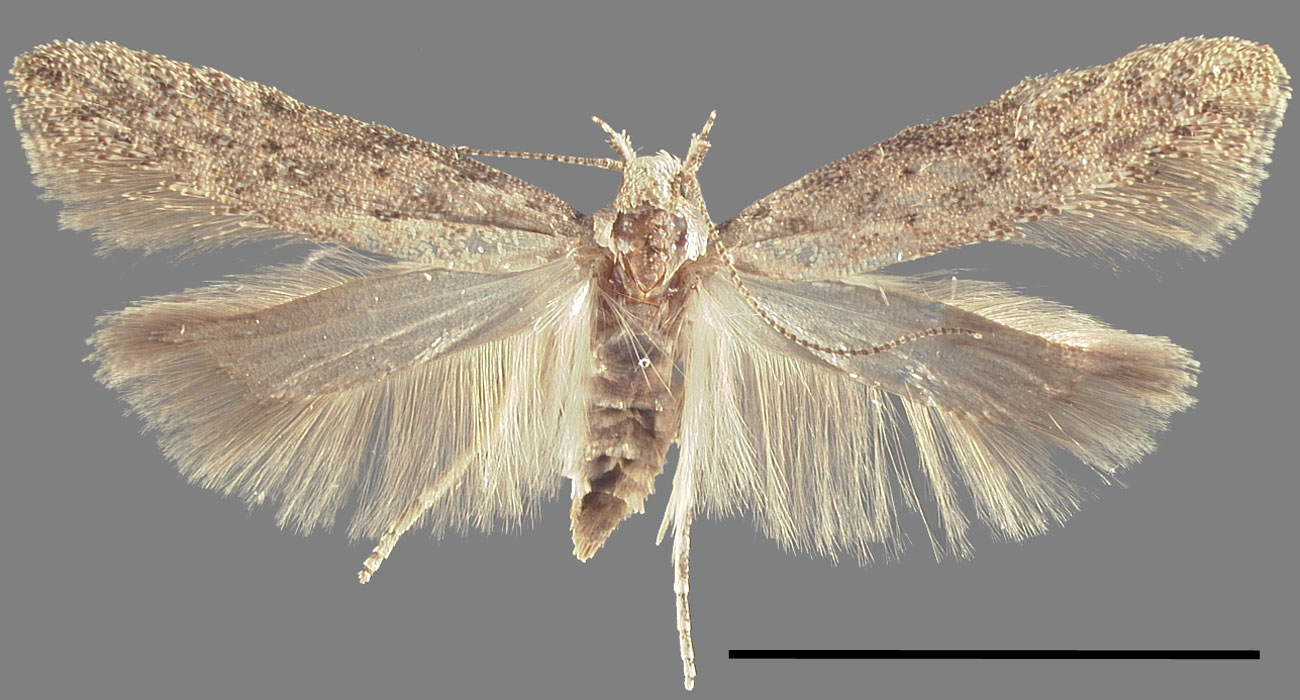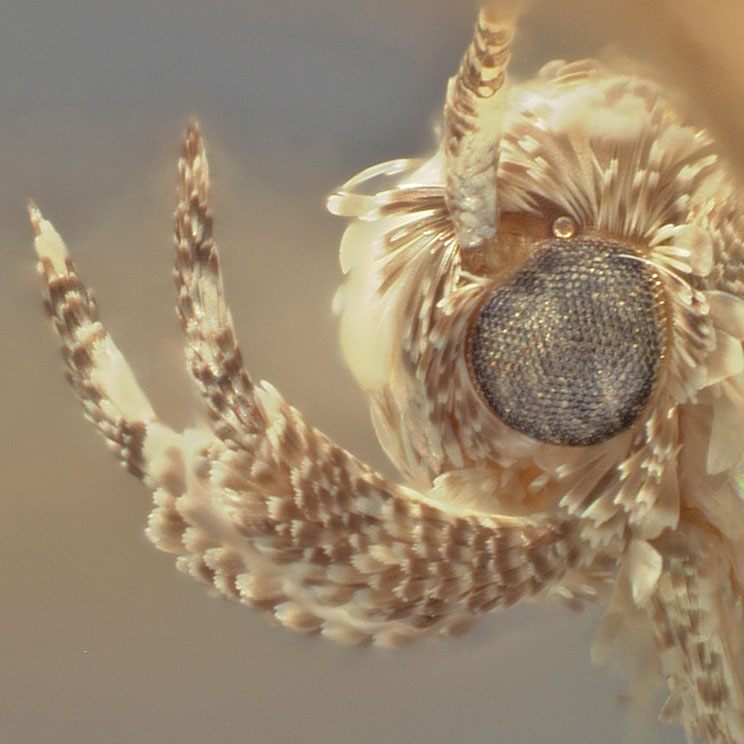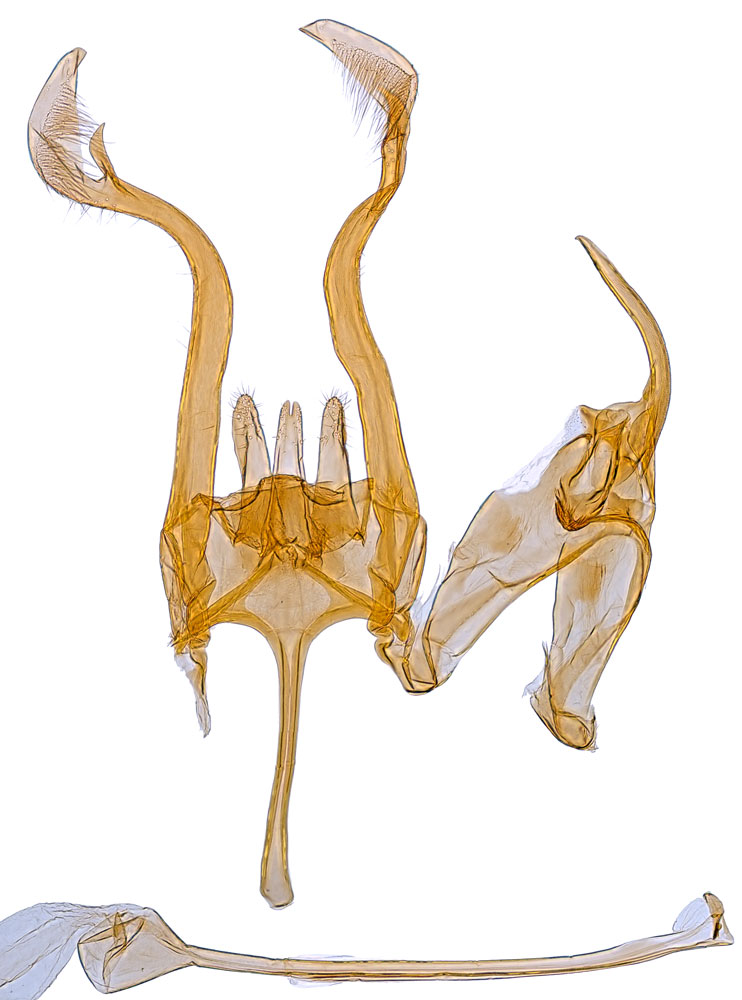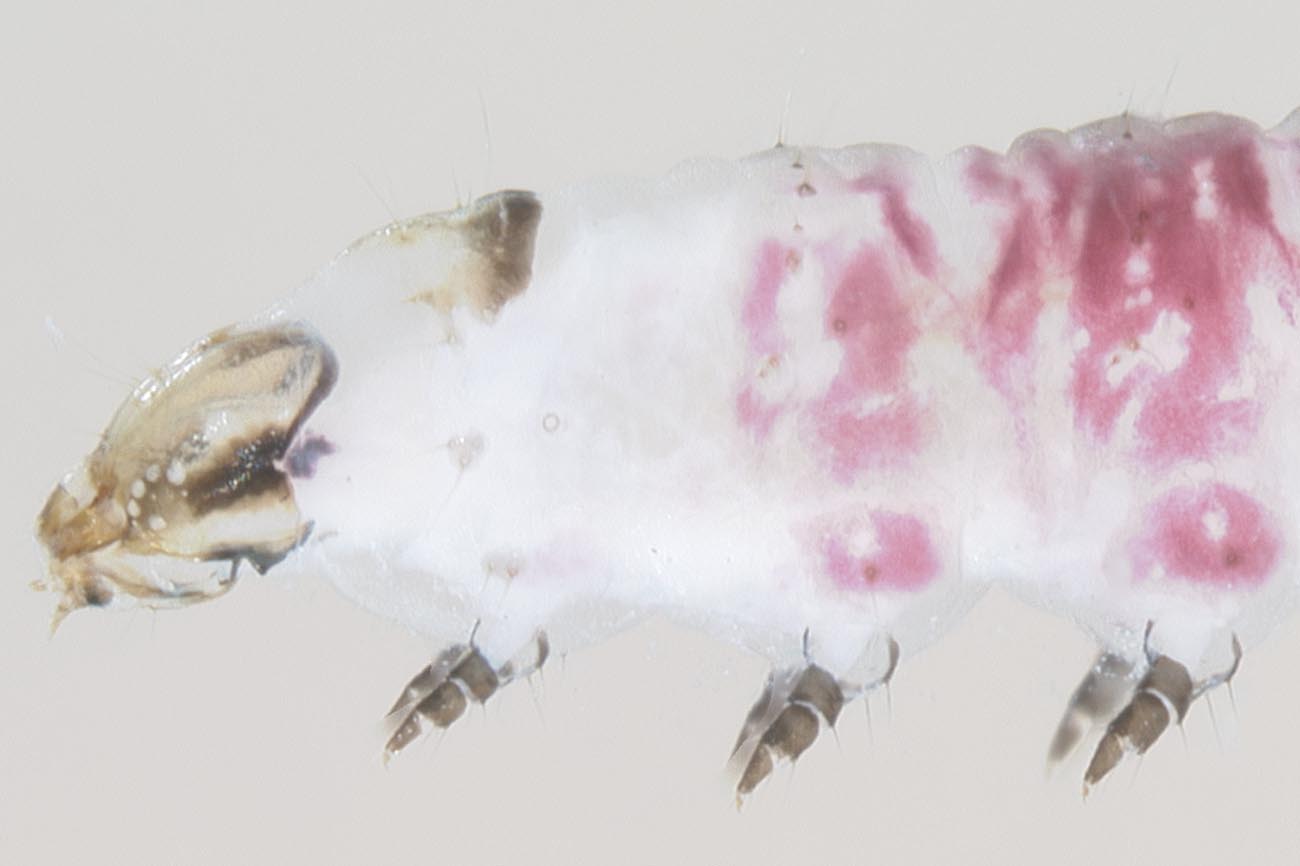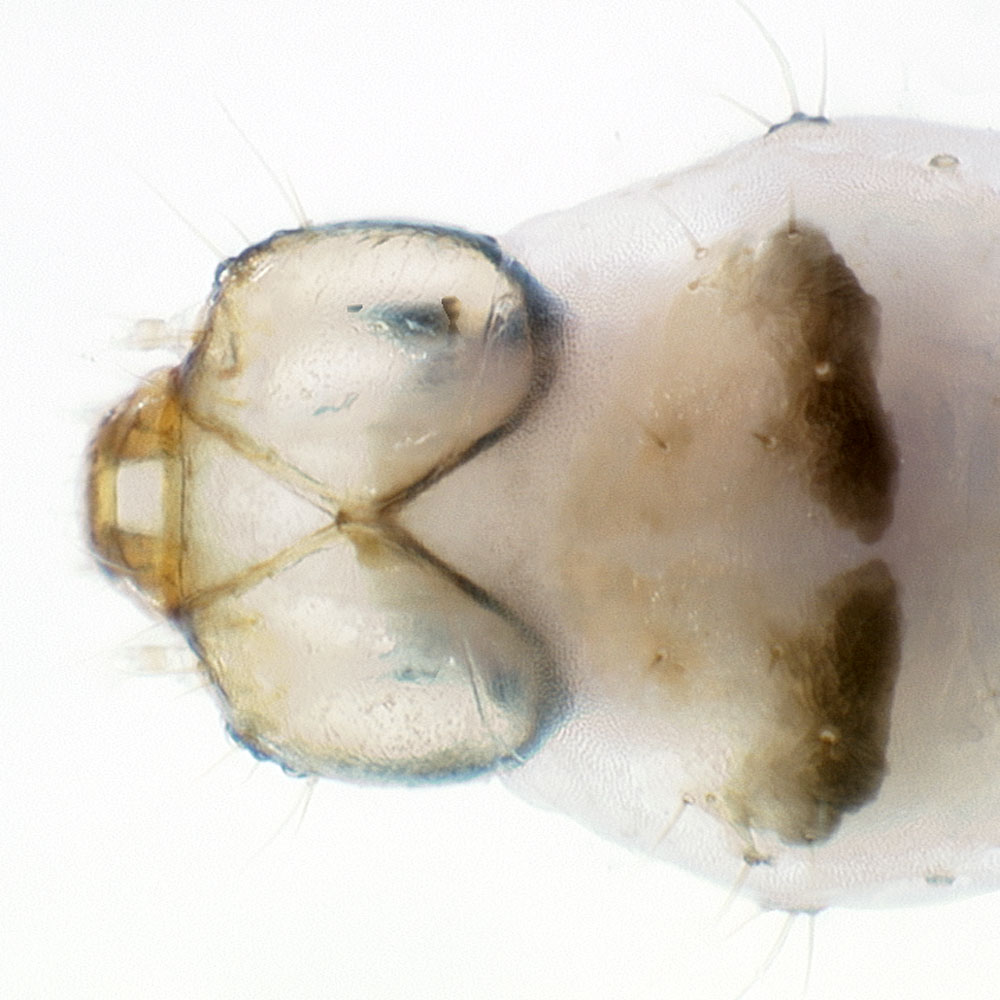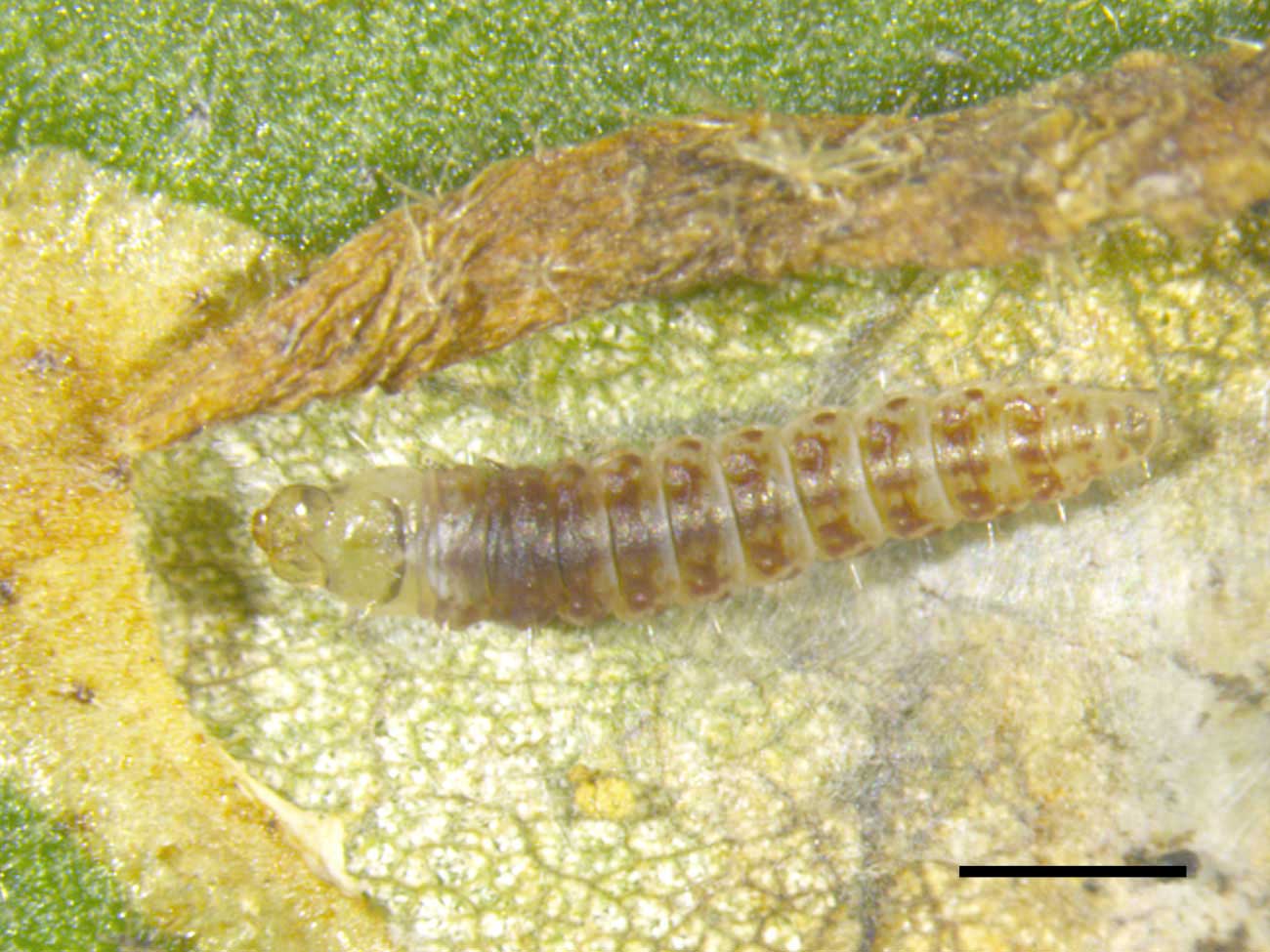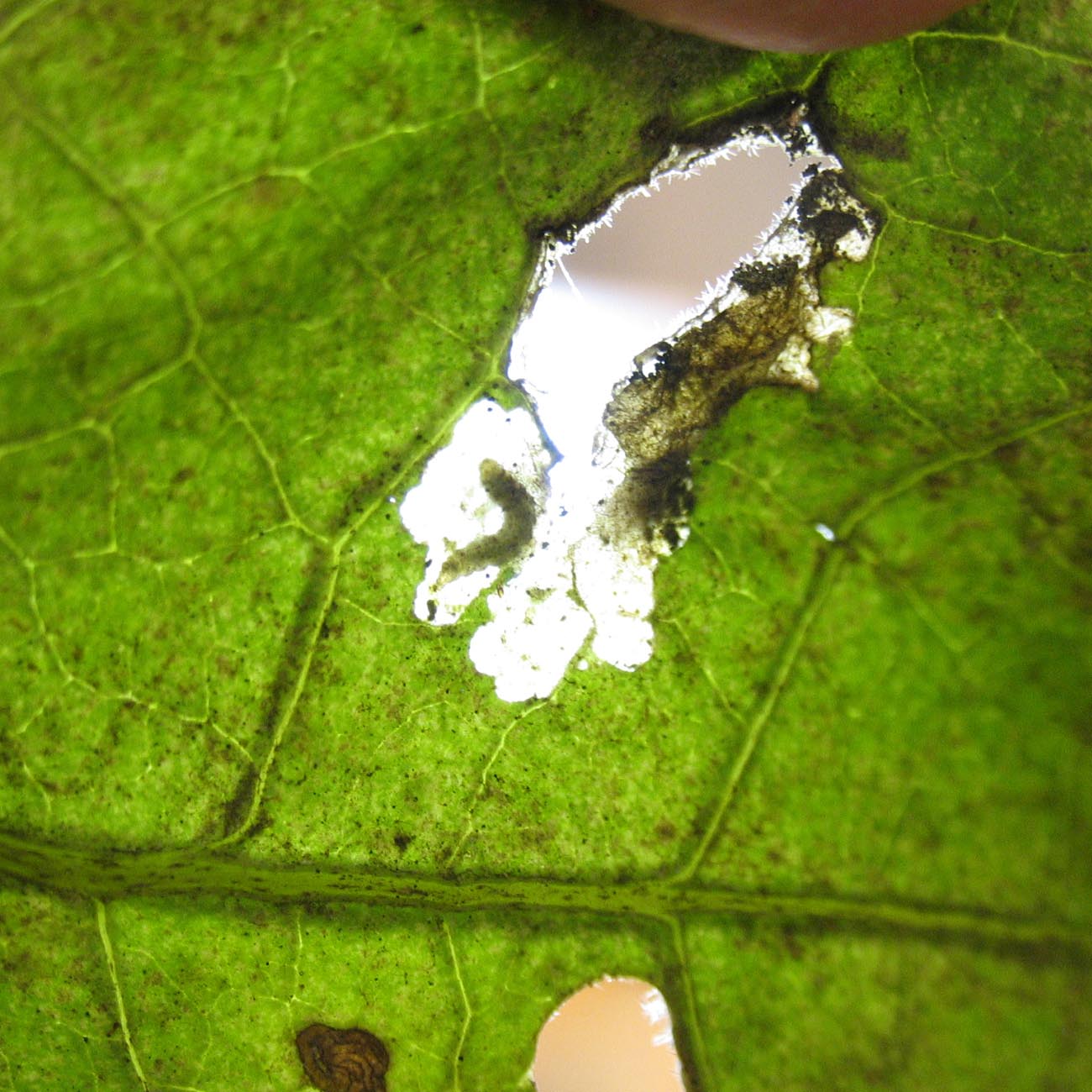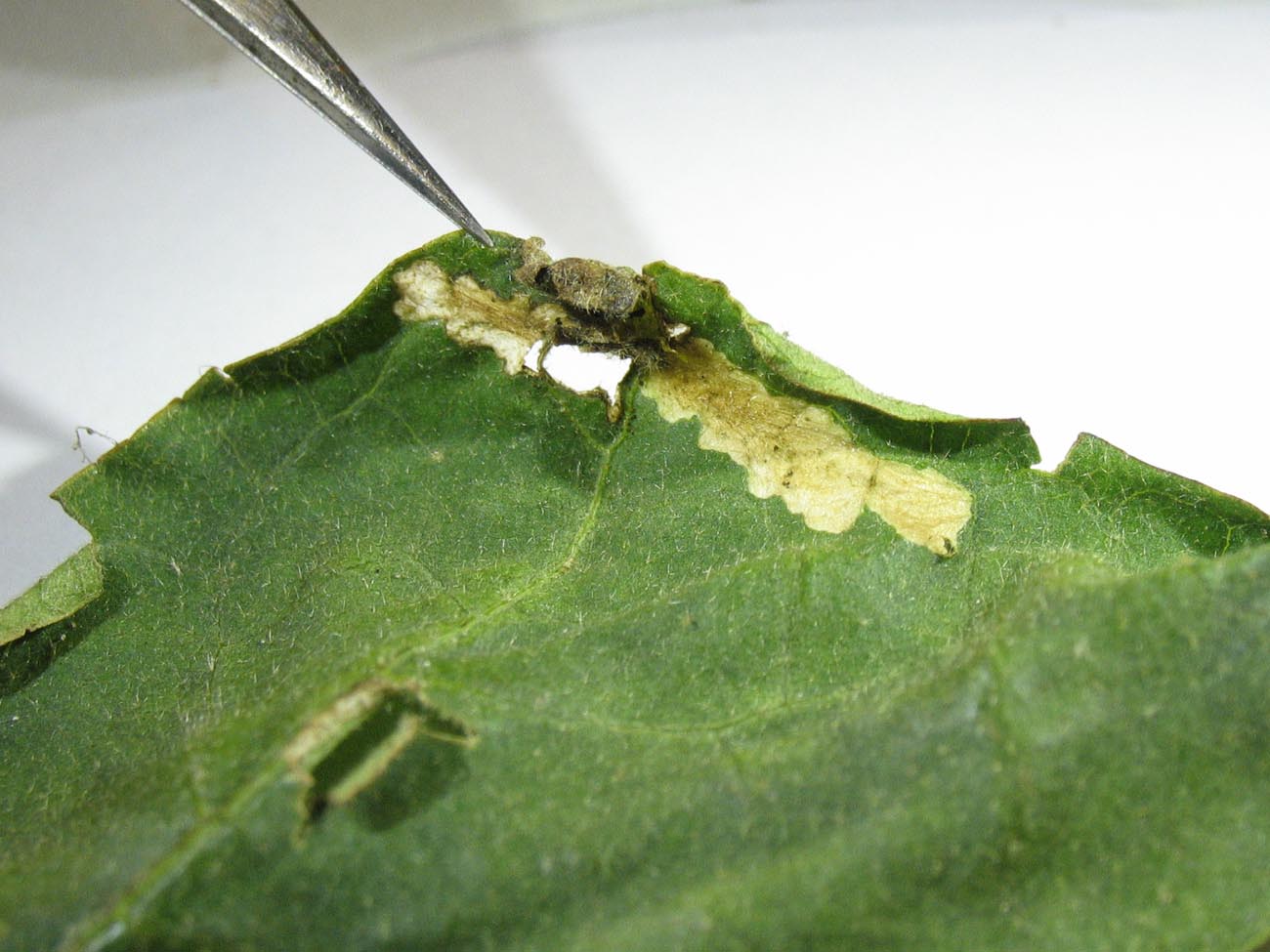Keiferia lycopersicella
|
Keiferia lycopersicella male habitus. Scale = 5 mm. |
|
Keiferia lycopersicella female habitus. Scale = 5 mm. |
|
Keiferia lycopersicella head. |
|
Keiferia lycopersicella male genitalia. |
|
Keiferia lycopersicella female genitalia. |
|
Larva of Keiferia lycopersicella. |
|
Head and thorax of Keiferia lycopersicella larva, lateral aspect. |
|
Head and prothorax of Keiferia lycopersicella larva. |
|
Skin texture of larva. The microspinule on each microgranule is shorter than the height of the microgranule.
|
|
Skin texture of larva of Keiferia lycopersicella. The microspinule on each microgranule is shorter than the height of the microgranule. |
|
Larva of Keiferia lycopersicella. Scale = 1 mm. |
|
Larva of Keiferia lycopersicella. |
|
Larva of Keiferia lycopersicella in eggplant leaf. |
Name
Keiferia lycopersicella (Walsingham, 1897)
Common name: tomato pinworm
Original combination: Eucatoptus lycopersicella Walsingham, 1897
Synonyms:
- Phthorimaea lenta Meyrick, 1917
- Phthorimaea lycopersicella Busck, 1928
Alternative combinations:
- Keiferia lenta (Meyrick, 1917)
- Keiferia lycopersicella (Busck, 1928)
- Aristotelia lycopersicella
Classification: Gelechioidea: Gelechiidae: Gelechiinae: Gnorimoschemini
Adult recognition
Adults are about 4.2–5.5 mm in forewing length. They are variably light to medium gray mottled with dark gray and yellowish-orange. The labial palpusLabial palpus:
The more prominent, elongate pair of appendages on the head, usually three-segmented (pl. palpi).
-800px.jpg) is upturned. The hindwing is trapezoidal with gray cilia, modified with hair-pencils above from the base of the costal margin in males. The abdomen is gray with the ventral surface very light dull yellow. The male genitalia have a sickle-shaped uncusUncus:
is upturned. The hindwing is trapezoidal with gray cilia, modified with hair-pencils above from the base of the costal margin in males. The abdomen is gray with the ventral surface very light dull yellow. The male genitalia have a sickle-shaped uncusUncus:
The prominent projection from the dorsal tegumen of the male genitalia. May be variously shaped as a hook, knob, hood, etc.
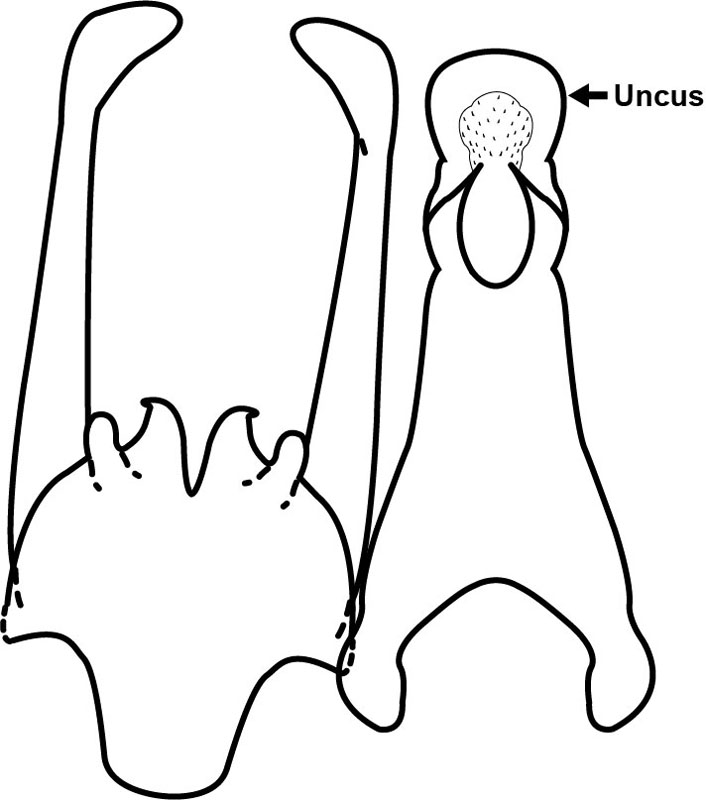 , an ovate gnathosGnathos:
, an ovate gnathosGnathos:
A variously shaped bridge-like structure, usually hooked or bowed, crossing the tegumen below the uncus.
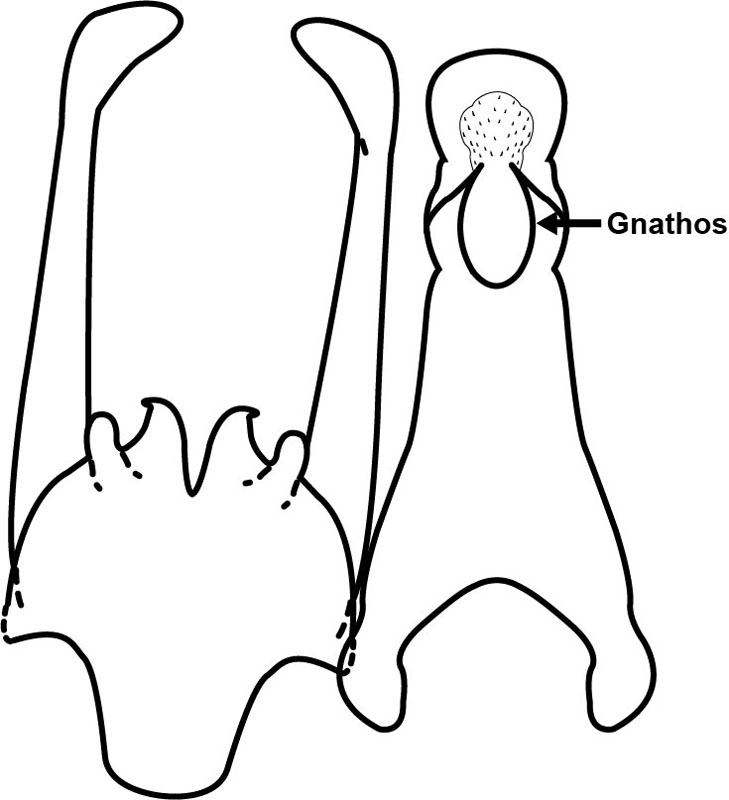 , an elongate valvaValva:
, an elongate valvaValva:
One of the pair of large lateral appendages of the male genitalia (pl. valvae).
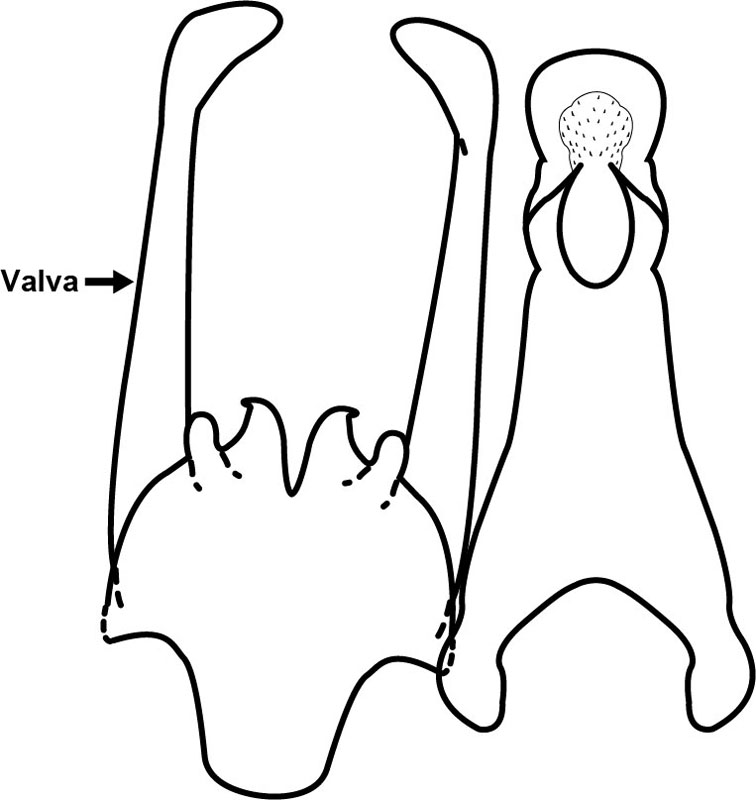 with enlarged apex which is bifurcate with unequal branches, and vinculumVinculum:
with enlarged apex which is bifurcate with unequal branches, and vinculumVinculum:
The ventral half of the male genitalia, from which the valvae arise.
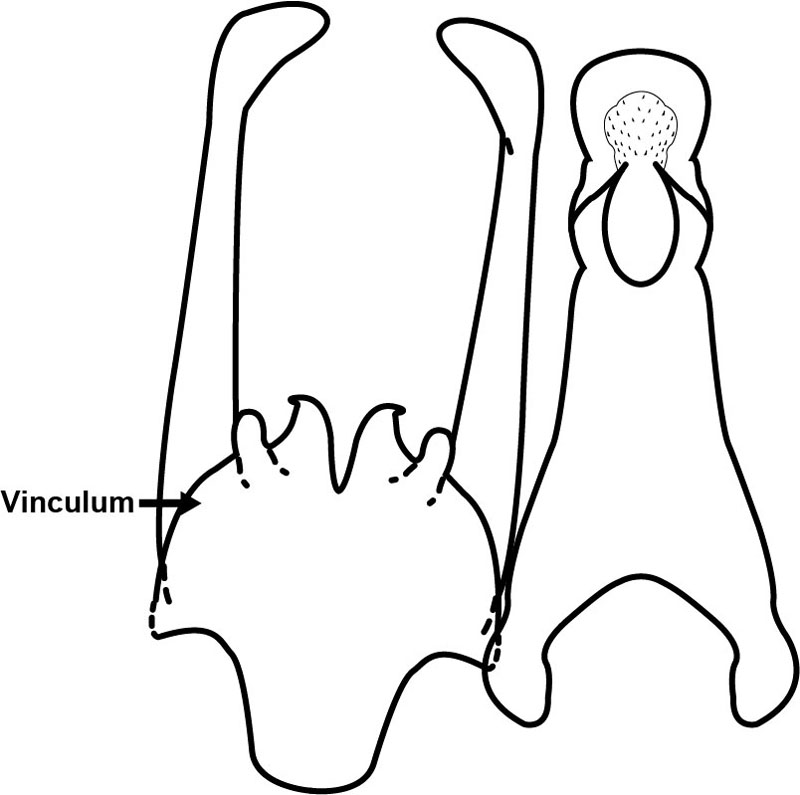 with the posterior margin projected medially and with paired finger-like lateral processes. Females have the ostium with oblong sclerotization, a long funnel-shaped antrumAntrum:
with the posterior margin projected medially and with paired finger-like lateral processes. Females have the ostium with oblong sclerotization, a long funnel-shaped antrumAntrum:
Posterior section of the ductus bursae, posterior of the colliculum.
 , and a large sickle-shaped signumSignum:
, and a large sickle-shaped signumSignum:
Any sclerite, sclerotized area, or discrete granular area on the wall of the corpus bursae (pl. signa).
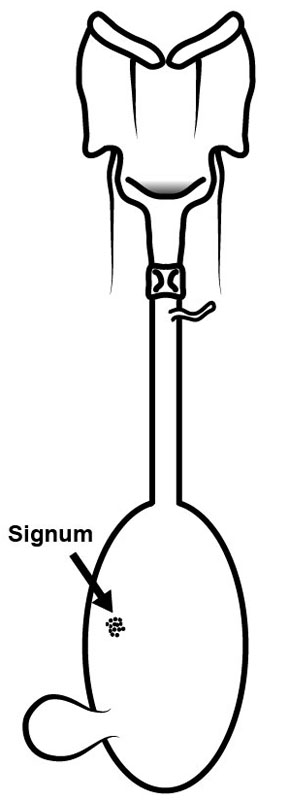 with protruding base.
with protruding base.
Immature stages
The prothoracic shieldProthoracic shield:
Also called the T1 shield. In the larva, the extensive sclerotized area of the dorsal half of the prothorax. It bears six setae on each side, and its color pattern is often diagnostic.
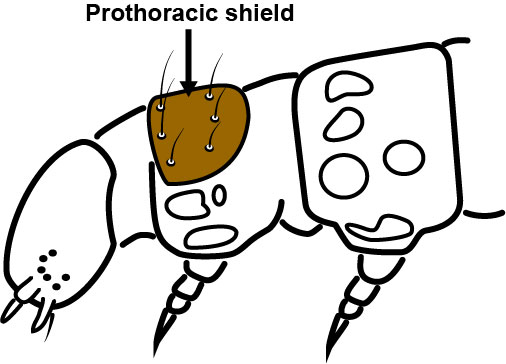 is pale with a dark band along the posterior margin, but early instars lack this shading. All three L setae on T1 are often joined on a single sclerotized pinaculumPinaculum:
is pale with a dark band along the posterior margin, but early instars lack this shading. All three L setae on T1 are often joined on a single sclerotized pinaculumPinaculum:
In the larva, a raised, blister-like area that is often but not necessarily pigmented. They normally surround a seta, or if more than one seta, they are considered to be fused. Some taxa, especially internally boring larvae, may have extra pinacula without setae.
. CrochetsCrochets:
Tiny, hook-like, sclerotized setae on the abdominal and anal prolegs of larvae. 'Uni-,' 'bi-,' and 'triordinal' refer to the relative sizes of crochets (one, two, or three different sizes).
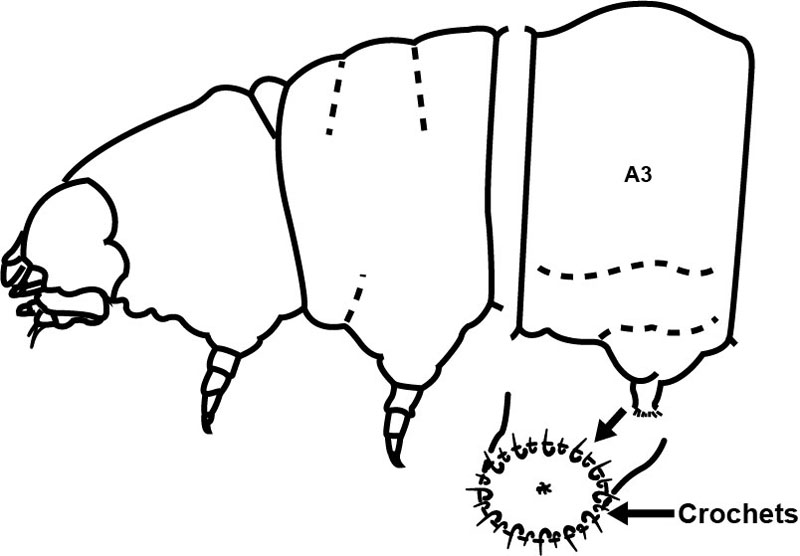 of A3-6 are in a penellipsePenellipse:
of A3-6 are in a penellipsePenellipse:
Pattern of larval crochets in a broken (incomplete) ellipse or circle. Characteristic of the target species as well as many other non-target Microlepidoptera.
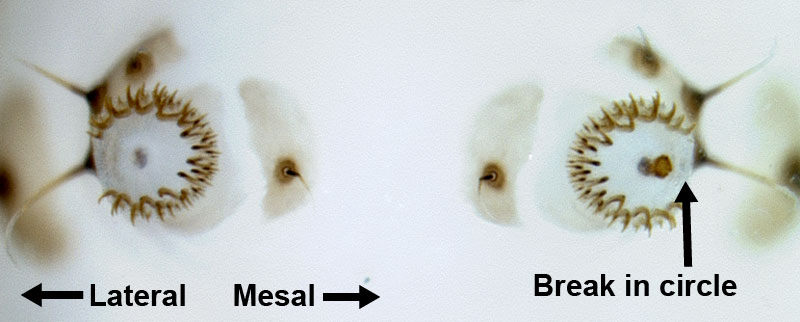 . SD1 of A9 is hair-like. The cuticle at least on the dorsumDorsum:
. SD1 of A9 is hair-like. The cuticle at least on the dorsumDorsum:
The posterior margin of a wing, also called the dorsal margin. So called because the edge faces dorsally when the wings are folded against the body.
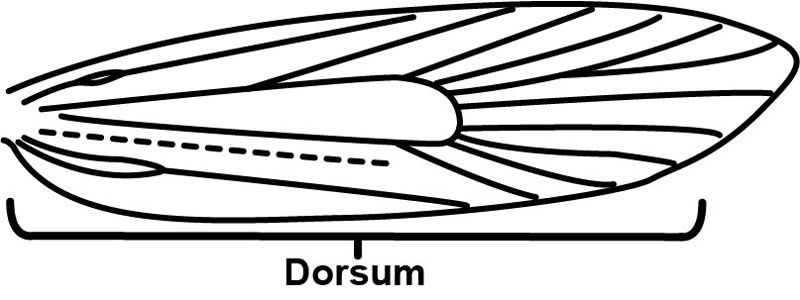 of the posterior abdominal segments has round to pointed microgranules bearing short microsetae.
of the posterior abdominal segments has round to pointed microgranules bearing short microsetae.
PDF - Dichotomous key to Gelechiid larvae
Similar species
This species is superficially similar to Tuta absoluta, but it can be distinguished by the grayish-black spots in the forewing foldFold:
The invisible line of folding below the discal cell on the forewing.
 followed by yellowish-orange scales. This species also resembles several species of Scrobipalpa, from which males can be separated by the long hair pencils at the base on the hindwing costaCosta:
followed by yellowish-orange scales. This species also resembles several species of Scrobipalpa, from which males can be separated by the long hair pencils at the base on the hindwing costaCosta:
(1) The anterior margin of the wing.
(2) In the male genitalia, the dorsal margin of the valva.
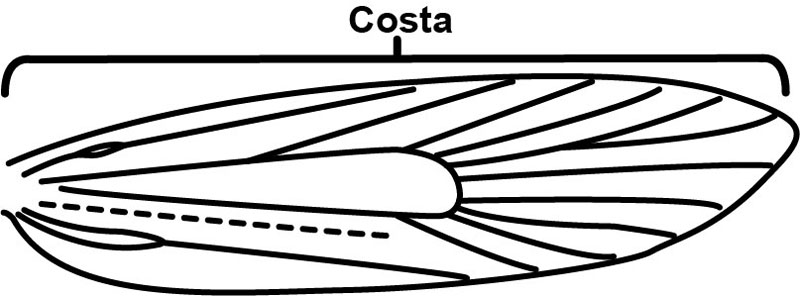 (lacking in Scrobipalpa).
(lacking in Scrobipalpa).
Keiferia lycopersicella is the only North American species we studied with a dark band on the posterior margin of the prothoracic shieldProthoracic shield:
Also called the T1 shield. In the larva, the extensive sclerotized area of the dorsal half of the prothorax. It bears six setae on each side, and its color pattern is often diagnostic.
 . It has a wide distribution and relatively wide host range. It is easily confused with the exotic species Tuta absoluta, also a tomato pest. The two are very similar but may be separated by the cuticular texture of the dorsumDorsum:
. It has a wide distribution and relatively wide host range. It is easily confused with the exotic species Tuta absoluta, also a tomato pest. The two are very similar but may be separated by the cuticular texture of the dorsumDorsum:
The posterior margin of a wing, also called the dorsal margin. So called because the edge faces dorsally when the wings are folded against the body.
 of the posterior abdominal segments. Keiferia lycopersicella has round to pointed microgranules. This same region has microspines in Tuta absoluta. Comparative material of both species is helpful to see this difference. Living larva may show color differences lost in preserved specimens. Early instars of either species will be difficult to recognize with morphology.
of the posterior abdominal segments. Keiferia lycopersicella has round to pointed microgranules. This same region has microspines in Tuta absoluta. Comparative material of both species is helpful to see this difference. Living larva may show color differences lost in preserved specimens. Early instars of either species will be difficult to recognize with morphology.
Behavior
Eggs are laid singly or in small groups on a leaf. Larvae initially make a blotch-like leaf-mine, but later they feed between spun leaves or enter the stem or fruits. Pupation occurs in a web on the ground surface.
Distribution
Native to North America, Hawaii and Mexico. USA (throughout Eastern and Southwestern part of the United States, Hawaii), Mexico, Central America and Caribbean, South America, Europe, West Indies.
Hosts
Solanum bahamense L. (Bahama nightshade)
Solanum carolinense L. (Carolina horsenettle)
Solanum lycopersicum L. (Garden tomato)
Solanum melongena L. var esculentum Nees (Eggplant)
Solanum tuberosum L. (Irish potato)
Solanum umbelliferum Eschsch. (Bluewitch nightshade)
Solanum xanti A. Gray (Chaparral nightshade)
Comments
This species is a well-known pest of tomato, but it is known to feed on various other solanaceous plants, including eggplant.
Literature
Huemer and Karsholt 2010Huemer and Karsholt 2010:
Huemer P and Karsholt O. 2010. Microlepidoptera of Europe. Vol. 6: Gelechiidae II (Gelechiinae: Gnorimoschemini). Apollo Books, Stenstrup.
Keifer 1936Keifer 1936:
Keifer HH. 1936. California microlepidoptera IX. Bulletin of the Department of Agriculture, State of California (Sacramento) 25: 235-259.
Walsingham 1897Walsingham 1897:
Walsingham [T de G]. 1897. Revision of the West Indian Micro-Lepidoptera, with descriptions of new species. Proceedings of the Zoological Society of London 1897: 54-183.


